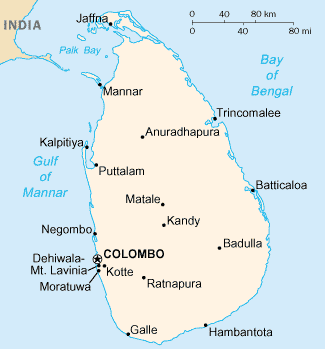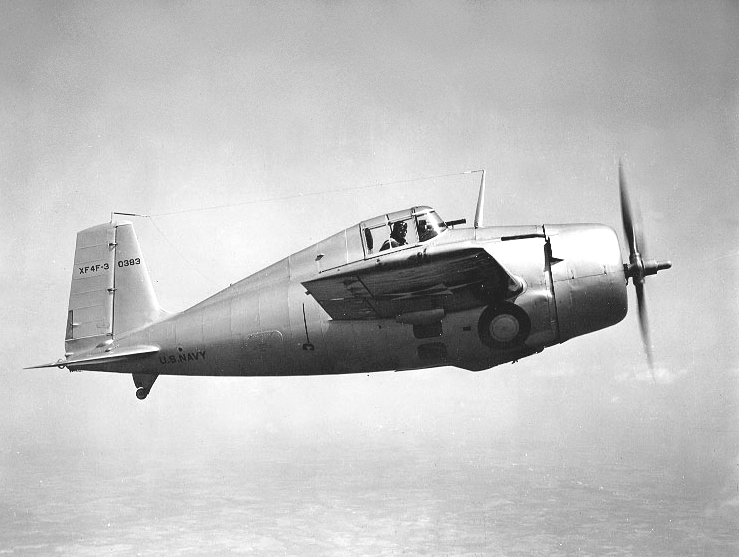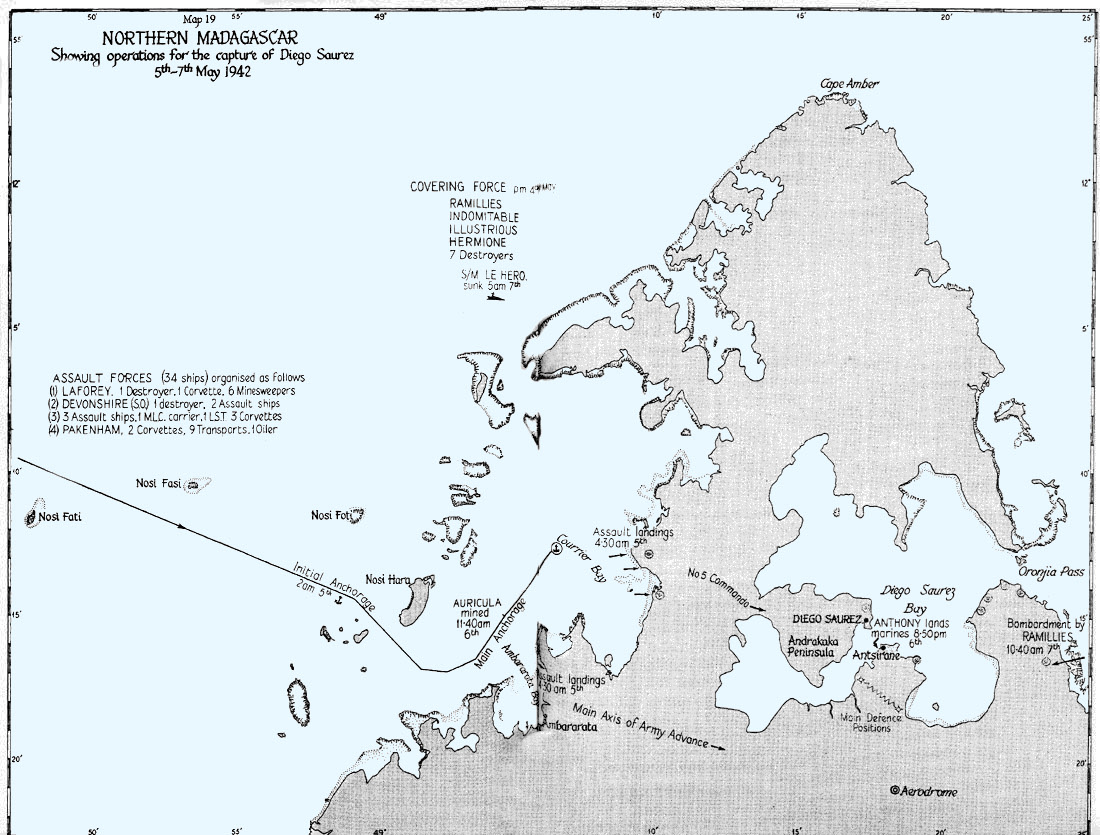|
Operation Stab
Operation Stab was a British naval deception during the Second World War to distract Japanese units for the forthcoming Guadalcanal Campaign, Guadalcanal campaign by the US armed forces. Background Admiral Ernest King, the head of the United States Navy in World War II, US Navy, to provide a distraction for the forthcoming Guadalcanal Campaign. The Admiralty (United Kingdom), Admiralty discussed the request with Vice-Admiral Sir James Somerville (admiral), James Somerville, the Commander-in-Chief of the Eastern Fleet, stressing their apprehension at sending aircraft carriers into areas where they could be attacked by land-based aircraft. Operation Pedestal, a convoy operation to Malta, was due in early August, in which two aircraft carriers were to sail into range of Luftwaffe and Regia Aeronautica airfields and wanted to wait to discover their fate. The Admiralty view limited the scope of a diversion operation to air attacks on Port Blair in the Andaman Islands or Sabang, Ac ... [...More Info...] [...Related Items...] OR: [Wikipedia] [Google] [Baidu] |
Pacific War
The Pacific War, sometimes called the Asia–Pacific War, was the Theater (warfare), theater of World War II that was fought in Asia, the Pacific Ocean, the Indian Ocean, and Oceania. It was geographically the largest theater of the war, including the vast Pacific Ocean theatre of World War II, Pacific Ocean theater, the South West Pacific theatre of World War II, South West Pacific theater, the Second Sino-Japanese War, and the Soviet–Japanese War. The Second Sino-Japanese War between the Empire of Japan and the Republic of China (1912–49), Republic of China had been in progress since 7 July 1937, with hostilities dating back as far as 19 September 1931 with the Japanese invasion of Manchuria. However, it is more widely accepted that the Pacific War itself began on 7 December (8 December Japanese time) 1941, when the Japanese simultaneously Japanese invasion of Thailand, invaded Thailand, attacked the British colonies of Malayan Campaign, Malaya, Battle of Singapore, ... [...More Info...] [...Related Items...] OR: [Wikipedia] [Google] [Baidu] |
Conrad Helfrich
Lieutenant Admiral Conrad Emil Lambert Helfrich (11 October 1886 – 20 September 1962) of the Royal Netherlands Navy was a leading Dutch naval figure of World War II. He was born in Semarang. World War II Helfrich was appointed overall commander of all forces in the Netherlands East Indies in October 1939. At the outbreak of the war in the Pacific he gave instructions to wage war aggressively. His small force of submarines sank more Japanese ships in the first weeks of the war than the entire British and US navies together, an exploit which earned him the nickname "Ship-a-day Helfrich". Admiral Helfrich worked tirelessly to establish co-operation with the Allied navies in the area since he knew that the Dutch could not hope to protect the Dutch East Indies by themselves. Java Sea When a combined command (ABDA) was finally created in January 1942, he was bypassed for the post of commander of the navy, in favour of Admiral Thomas C. Hart of the United States Navy. Helfric ... [...More Info...] [...Related Items...] OR: [Wikipedia] [Google] [Baidu] |
Fairey Fulmar
The Fairey Fulmar is a British carrier-borne reconnaissance aircraft/fighter aircraft which was developed and manufactured by aircraft company Fairey Aviation. It was named after the northern fulmar, a seabird native to the British Isles. The Fulmar served with the Royal Navy's Fleet Air Arm (FAA) during the Second World War. The design of the Fulmar was based on that of the earlier Fairey P.4/34, a land-based light bomber developed during 1936 as a replacement for the Fairey Battle light bomber. Fairey had redesigned the aircraft as a navalised observation/fighter aircraft to satisfy the requirements of Specification O.8/38, for which it was selected. Although its performance (like that of its Battle antecedent) was unspectacular, the Fulmar was a reliable, sturdy aircraft with long range and an effective armament of eight machine guns; the type could also be put into production relatively quickly. On 4 January 1940, the first production aircraft made its first flight and de ... [...More Info...] [...Related Items...] OR: [Wikipedia] [Google] [Baidu] |
Grumman Martlet
The Grumman F4F Wildcat is an American carrier-based fighter aircraft that entered service in 1940 with the United States Navy, and the British Royal Navy where it was initially known as the Martlet. First used by the British in the North Atlantic, the Wildcat was the only effective fighter available to the United States Navy and Marine Corps in the Pacific Theater during the early part of the Second World War. The disappointing Brewster Buffalo was withdrawn in favor of the Wildcat and replaced as aircraft became available. With a top speed of , the Wildcat was outperformed by the faster (), more maneuverable, and longer-ranged Mitsubishi A6M Zero. US Navy pilots, including John "Jimmy" Thach, a pioneer of fighter tactics to deal with the A6M Zero, were greatly dissatisfied with the Wildcat's inferior performance against the Zero in the battles of the Coral Sea and Midway. The Wildcat has a claimed air combat kill-to-loss ratio of 5.9:1 in 1942 and 6.9:1 for the entire war.Po ... [...More Info...] [...Related Items...] OR: [Wikipedia] [Google] [Baidu] |
Kawanishi H6K
The Kawanishi H6K was an Imperial Japanese Navy flying boat produced by the Kawanishi Aircraft Company and used during World War II for maritime patrol duties. The Allied reporting name for the type was Mavis; the Navy designation was . Design and development The aircraft was designed in response to a Navy requirement of 1934 for a long-range flying boat and incorporated knowledge gleaned by a Kawanishi team that visited the Short Brothers factory in the UK, at that time one of the world's leading producers of flying boats, and from building the Kawanishi H3K, a license-built, enlarged version of the Short Rangoon. The "Type S", as Kawanishi called it, was a large, four-engined monoplane with twin tails, and a hull suspended beneath the parasol wing by a network of struts. Three prototypes were constructed, each one making gradual refinements to the machine's handling both in the water and in the air, and finally fitting more powerful engines. The first of these flew on 14 ... [...More Info...] [...Related Items...] OR: [Wikipedia] [Google] [Baidu] |
Battle Of Madagascar
The Battle of Madagascar (5 May – 6 November 1942) was a British campaign to capture the Vichy French-controlled island Madagascar during World War II. The seizure of the island by the British was to deny Madagascar's ports to the Imperial Japanese Navy and to prevent the loss or impairment of the Allied shipping routes to India, Australia and Southeast Asia. It began with Operation Ironclad, the seizure of the port of Diego-Suarez (now Antsiranana) near the northern tip of the island, on 5 May 1942. A subsequent campaign to secure the entire island, Operation Stream Line Jane, was opened on 10 September. The Allies broke into the interior, linking up with forces on the coast and secured the island by the end of October. Fighting ceased and an armistice was granted on 6 November. This was the first large-scale operation by the Allies combining sea, land and air forces. The island was placed under Free French control.Rigge p. 100 Background Geopolitical Diego-Suarez is ... [...More Info...] [...Related Items...] OR: [Wikipedia] [Google] [Baidu] |
Malacca Strait
The Strait of Malacca is a narrow stretch of water, 500 mi (800 km) long and from 40 to 155 mi (65–250 km) wide, between the Malay Peninsula (Peninsular Malaysia) to the northeast and the Indonesian island of Sumatra to the southwest, connecting the Andaman Sea (Indian Ocean) and the South China Sea (Pacific Ocean). As the main shipping channel between the Indian and Pacific oceans, it is one of the most important shipping lanes in the world. It is named after the Malacca Sultanate that ruled over the strait between 1400 and 1511, the center of administration of which was located in the modern-day state of Malacca, Malaysia. Extent The International Hydrographic Organization define the limits of the Strait of Malacca as follows: History Early traders from Arabia, Africa, Persia, and Southern India reached Kedah before arriving at Guangzhou. Kedah served as a western port on the Malay Peninsula. They traded glassware, camphor, cotton goods, brocades, ivory, sandalwo ... [...More Info...] [...Related Items...] OR: [Wikipedia] [Google] [Baidu] |
Bay Of Bengal Map
A bay is a recessed, coastal body of water that directly connects to a larger main body of water, such as an ocean, a lake, or another bay. A large bay is usually called a gulf, sea, sound, or bight. A cove is a small, circular bay with a narrow entrance. A fjord is an elongated bay formed by glacial action. A bay can be the estuary of a river, such as the Chesapeake Bay, an estuary of the Susquehanna River. Bays may also be nested within each other; for example, James Bay is an arm of Hudson Bay in northeastern Canada. Some large bays, such as the Bay of Bengal and Hudson Bay, have varied marine geology. The land surrounding a bay often reduces the strength of winds and blocks waves. Bays may have as wide a variety of shoreline characteristics as other shorelines. In some cases, bays have beaches, which "are usually characterized by a steep upper foreshore with a broad, flat fronting terrace".Maurice Schwartz, ''Encyclopedia of Coastal Science'' (2006), p. 129. Bays were s ... [...More Info...] [...Related Items...] OR: [Wikipedia] [Google] [Baidu] |
British Ceylon
British Ceylon ( si, බ්රිතාන්ය ලංකාව, Britānya Laṃkāva; ta, பிரித்தானிய இலங்கை, Biritthāṉiya Ilaṅkai) was the British Crown colony of present-day Sri Lanka between 1796 and 4 February 1948. Initially, the area it covered did not include the Kingdom of Kandy, which was a protectorate, but from 1817 to 1948 the British possessions included the whole island of Ceylon, now the nation of Sri Lanka. History Background Before the beginning of the Dutch governance, the island of Ceylon was divided between the Portuguese Empire and the Kingdom of Kandy, who were in the midst of a war for control of the island as a whole. The island attracted the attention of the newly formed Dutch Republic when they were invited by the Sinhalese King to fight the Portuguese. Dutch rule over much of the island was soon imposed. In the late 18th century the Dutch, weakened by their wars against Great Britain, were conq ... [...More Info...] [...Related Items...] OR: [Wikipedia] [Google] [Baidu] |
Royal Fleet Auxiliary
The Royal Fleet Auxiliary (RFA) is a naval auxiliary fleet owned by the UK's Ministry of Defence. It provides logistical and operational support to the Royal Navy and Royal Marines. The RFA ensures the Royal Navy is supplied and supported by providing fuel and stores through replenishment at sea, transporting Royal Marines and British Army personnel, providing medical care and transporting equipment and essentials around the world. In addition the RFA acts independently providing humanitarian aid, counter piracy and counter narcotic patrols together with assisting the Royal Navy in preventing conflict and securing international trade. They are a uniformed civilian branch of the Royal Navy staffed by British merchant sailors. RFA personnel are civilian employees of the Ministry of Defence and members of the Royal Naval Reserve and Sponsored Reserves. Although RFA personnel wear Merchant Navy rank insignia with naval uniforms, they are part of the Royal Navy. RFA vessels a ... [...More Info...] [...Related Items...] OR: [Wikipedia] [Google] [Baidu] |
Trincomalee
Trincomalee (; ta, திருகோணமலை, translit=Tirukōṇamalai; si, ත්රිකුණාමළය, translit= Trikuṇāmaḷaya), also known as Gokanna and Gokarna, is the administrative headquarters of the Trincomalee District and major resort port city of Eastern Province, Sri Lanka. Located on the east coast of the island overlooking the Trincomalee Harbour, north-east of Colombo, south-east of Jaffna and miles north of Batticaloa, Trincomalee has been one of the main centres of Sri Lankan Tamil language speaking culture on the island for over two millennia. With a population of 99,135, the city is built on a peninsula of the same name, which divides its inner and outer harbours. People from Trincomalee are known as Trincomalians and the local authority is Trincomalee Urban Council. Trincomalee city is home to the famous Koneswaram temple from where it developed and earned its historic Tamil name ''Thirukonamalai''. The town is home to other hist ... [...More Info...] [...Related Items...] OR: [Wikipedia] [Google] [Baidu] |









